Manual Bowers and Wilkins DM305 Altifalante
Precisa de um manual para o seu Bowers and Wilkins DM305 Altifalante? Abaixo você pode visualizar e baixar gratuitamente o manual em PDF em português. Este produto tem atualmente 5 perguntas frequentes, 0 comentários e tem 0 votos. Se este não for o manual que você deseja, por favor contacte-nos.
Seu produto está com defeito e o manual não oferece solução? Vá a um Repair Café para obter serviços de reparo gratuitos.
Manual
Loading…

Loading…
Avaliação
Deixe-nos saber o que você pensa sobre a Bowers and Wilkins DM305 Altifalante, deixando uma classificação do produto. Quer compartilhar suas experiências com este produto ou fazer uma pergunta? Por favor, deixe um comentário na parte inferior da página.Mais sobre este manual
Entendemos que é bom ter um manual em papel para o seu Bowers and Wilkins DM305 Altifalante. Você sempre pode baixar o manual em nosso site e imprimi-lo você mesmo. Se desejar um manual original, recomendamos que entre em contato com Bowers and Wilkins. Eles podem fornecer um manual original. Você está procurando o manual do seu Bowers and Wilkins DM305 Altifalante em outro idioma? Escolha o seu idioma preferido em nossa página inicial e pesquise o número do modelo para ver se o temos disponível.
Especificações
| Marca | Bowers and Wilkins |
| Modelo | DM305 |
| Categoria | Altifalantes |
| Tipo de arquivo | |
| Tamanho do arquivo | 0.09 MB |
Todos os manuais para Bowers and Wilkins Altifalantes
Mais manuais de Altifalantes
Perguntas frequentes sobre Bowers and Wilkins DM305 Altifalante
Nossa equipe de suporte pesquisa informações úteis e respostas a perguntas frequentes sobre produtos. Se você encontrar algum dado incorreto em nossas perguntas frequentes, informe-nos usando nosso formulário de contato.
Quero conectar um alto-falante à minha televisão com HDMI, que porta devo usar? Verificado
Você precisa usar a porta HDMI-ARC, que é feita especificamente para conectar equipamentos de áudio.
Isso foi útil (1390) Consulte Mais informaçãoO que as frequências dizem sobre meu altifalante? Verificado
Elas indicam a amplitude de frequências que o altifalante pode produzir. Uma maior amplitude de frequências fornecerá uma maior variação no som e produzir uma qualidade de som superior.
Isso foi útil (752) Consulte Mais informaçãoQuando é que a minha música está alta demais? Verificado
Sons acima de 80 decibéis (dB) podem danificar a audição. Sons acima 120dB danificam imediatamente a audição. A gravidade do dano depende de quantas vezes e por quanto tempo o som é ouvido.
Isso foi útil (440) Consulte Mais informaçãoO bluetooth funciona através de paredes e tetos? Verificado
Um sinal bluetooth funcionará através das paredes e do teto, a menos que sejam feitos de metal. Dependendo da espessura e do material da parede, o sinal pode perder força.
Isso foi útil (205) Consulte Mais informaçãoAté que nível de ruído é seguro para crianças? Verificado
As crianças têm problemas auditivos mais rapidamente do que os adultos. Portanto, é importante nunca expor crianças a ruídos mais altos do que 85dB. No caso dos fones de ouvido, existem modelos especiais para crianças. No caso de alto-falantes ou outras situações, você deve estar atento para que o ruído não ultrapasse esse nível.
Isso foi útil (190) Consulte Mais informação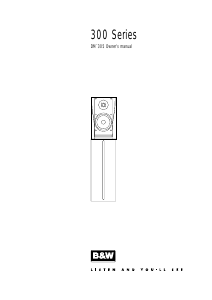


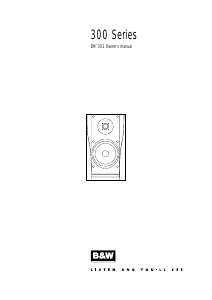

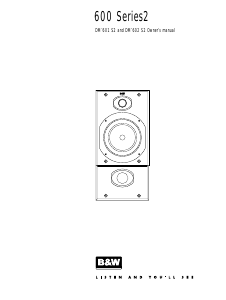
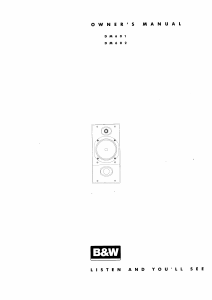
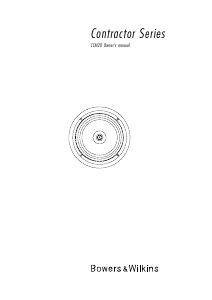


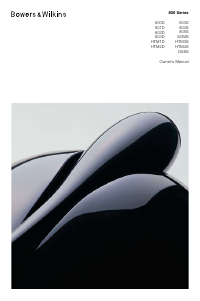
Participe da conversa sobre este produto
Aqui você pode compartilhar o que pensa sobre Bowers and Wilkins DM305 Altifalante. Se você tiver alguma dúvida, primeiro leia atentamente o manual. A solicitação de manual pode ser feita através do nosso formulário de contato.